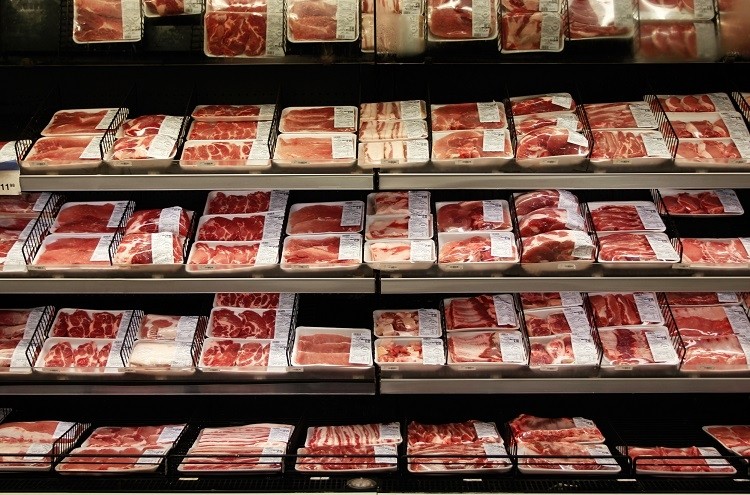Discover the Art of the Butcher's Cut in a Modern Meat Market
In the ever-evolving landscape of modern-day meat markets, the butcher's cut has transcended its standard origins, combining age-old workmanship with modern practices. Today's butchers are not just processors of meat; they are experienced craftsmens that emphasize sustainability and honest sourcing. Their expertise in selecting and preparing cuts tailored to specific culinary demands uses an unequaled dining experience. What truly sets the modern butcher apart is their capacity to build a much deeper connection in between consumers and the beginnings of their meat. How do these masters equilibrium practice with technology, and what effects does this have for the future of meat usage?
Advancement of Butchery Strategies
The advancement of butchery strategies mirrors a rich tapestry of technology and adjustment driven by innovations in innovation, adjustments in consumer demand, and a deeper understanding of meat scientific research. Historically, butchery was a craft passed down with generations, with methods developed over centuries to optimize return and taste. However, the industrial revolution ushered in automation, changing typical methods and allowing massive processing.
The mid-20th century saw butchery techniques further improved by scientific insights right into muscle biology and meat aging, enhancing both inflammation and preference. Advancements like vacuum cleaner packaging and refrigeration extended product shelf-life, allowing butchers to diversify offerings and enhance quality assurance. This duration likewise noted the rise of specific tools, such as band saws and meat slicers, which increased precision and efficiency in meat handling.

The 21st century has presented electronic modern technology into the butchery world. Electronic systems now help in tracking animal provenance and maximizing cuts to fulfill particular customer preferences. Additionally, a renewal in artisanal butchery has emerged, mixing typical abilities with modern-day knowledge to deal with customers seeking honest and sustainable meat choices. This evolution underscores a vibrant interplay between practice and advancement, meeting contemporary needs while maintaining the craft's heritage.
Comprehending Meat Cuts
Understanding the details of meat cuts is vital for both butchers and customers seeking quality and value. For butchers, exact cuts reflect ability and respect for the craft, ensuring minimal waste and ideal return.

Recognizing muscle mass make-up is crucial; muscles made use of extra often by the animal often tend to be tougher and are best fit for slow food preparation approaches, while less-used muscular tissues, like those located in the loin, are extra tender and ideal for cooking or roasting. Knowledge with these distinctions empowers customers to make informed options, enhancing their culinary ventures.
Choosing High Quality Meat
Picking the right meat involves greater than simply selecting a visually appealing piece from the screen. bagley farms meat market edwardsville il. The art of choosing high quality meat requires a critical eye and understanding of specific characteristics that signify freshness and quality. Firstly, focus on the shade; beef ought to have an intense, cherry-red tone, while lamb needs to display a soft pink tone, and pork a light pink. This indicates the meat is fresh and hasn't been subjected to oxygen for too long.
Secondly, consider the marbling, which refers to the white streaks of fat within the muscle mass. Appropriate marbling is a crucial sign of tenderness and taste, as it thaws throughout food preparation, boosting the meat's juiciness. Bear in mind, higher marbling commonly correlates with superior top quality cuts, such as USDA Prime.
Texture is one more crucial element; meat needs to really feel firm to the touch, not slimy or extremely soft. Furthermore, bear in mind the aroma. Fresh meat ought to have a tidy, neutral odor, devoid of any kind of sour or off-putting odors.
Pairing Cuts With Food Preparation Techniques

On the other hand, harder cuts like brisket and chuck roast are abundant in collagen, which damages down right into jelly when prepared slowly. These cuts are perfect for braising or slow roasting, enabling the meat to soften over time and create deep, complex tastes. In a similar way, cuts such as brief ribs and pork shoulder prosper with slow-cooking methods, where extended cooking times transform their robust structures right into succulent meals.
Lamb shanks and oxtail, which call for long term cooking to tenderize, are best candidates for stewing or slow-moving simmering. These methods coax out abundant, hearty flavors while keeping moisture. By recognizing the one-of-a-kind attributes of each cut, chefs and home cooks alike can elevate their cooking creations, making certain each meal is both satisfying and unforgettable.
The Butcher's Role Today
Browsing the advancing landscape of the modern meat market, the butcher's function today expands beyond plain preparation of cuts. Contemporary butchers are culinary craftsmens, instructors, and supporters for lasting techniques. They bridge the gap in between the ranch and the fork by guaranteeing honest sourcing, recognizing animal husbandry, and prioritizing openness in the supply chain. This change shows the expanding consumer need for high quality over amount, where provenance and animal well-being are paramount.
In addition to crafting precise cuts, butchers currently involve straight with clients, offering cooking advice and tailoring options to match private demands and preferences. Their competence in meat aging, marbling, and taste profiles equips consumers to make enlightened choices, boosting their cooking experiences. This individualized service exemplifies the butcher's evolving role as a trusted consultant in the kitchen area.
In addition, butchers are critical in minimizing waste, using whole pets to create varied items such as sausages and supplies. This extensive method not just appreciates the pet yet additionally lines up with modern sustainability goals. This way, the modern butcher personifies both tradition and development, adapting to an ever-changing market while protecting the virtuosity and honesty of their craft.
Verdict
Proficiency in recognizing diverse meat cuts and high quality indications equips butchers to provide enlightened recommendations, straightening right here certain cuts with optimal cooking methods. By recognizing historic techniques while embracing contemporary needs, Get More Info the butcher's role remains crucial in today's sophisticated meat market.